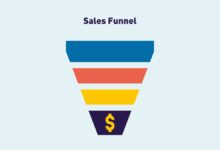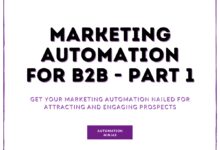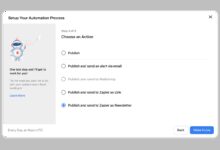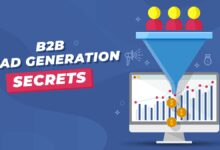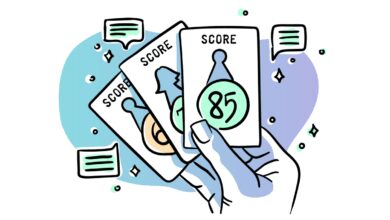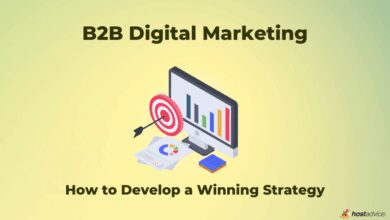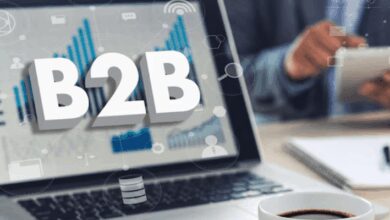B2B Advertising Platform: 7 Ultimate Power Tools for 2024
In today’s hyper-connected digital landscape, choosing the right b2b advertising platform can make or break your growth strategy. With precision targeting, data-driven insights, and scalable solutions, these platforms are revolutionizing how businesses reach decision-makers.
What Is a B2B Advertising Platform and Why It Matters

A B2B advertising platform is a digital ecosystem designed to help businesses market their products or services to other companies. Unlike B2C advertising, which often targets emotions and instant gratification, B2B advertising focuses on logic, ROI, long-term value, and complex buying cycles. These platforms enable marketers to deliver highly targeted, data-backed campaigns that speak directly to procurement teams, executives, and technical evaluators.
Defining the B2B Advertising Ecosystem
The B2B advertising ecosystem is a network of technologies, data providers, ad exchanges, and demand-side platforms (DSPs) that work together to deliver ads to professional audiences. These platforms often integrate with CRM systems, marketing automation tools, and analytics suites to ensure alignment across the customer journey.
- They use firmographic data (industry, company size, revenue) instead of just demographics.
- They prioritize intent data—signals that a company is actively researching solutions.
- They support account-based marketing (ABM), allowing hyper-personalized outreach to target accounts.
Platforms like LinkedIn Marketing Solutions exemplify this ecosystem by combining professional identity data with robust ad delivery mechanisms.
How B2B Differs from B2C Advertising
Understanding the distinction between B2B and B2C advertising is crucial for selecting the right b2b advertising platform. While B2C campaigns might focus on brand awareness and impulse buys, B2B campaigns are built on trust, credibility, and long-term relationships.
- Audience size: B2B audiences are smaller but more valuable per conversion.
- Decision-making: B2B purchases often involve multiple stakeholders and longer sales cycles.
- Content depth: B2B ads require detailed, educational content—whitepapers, case studies, webinars—versus emotional hooks.
“In B2B, you’re not selling a product; you’re selling a solution to a business problem.” — Marketing Executive, Gartner
Top 7 B2B Advertising Platforms Dominating 2024
The market for b2b advertising platform solutions has exploded in recent years. From social media giants to niche intent-data providers, the options are vast. Below, we break down the seven most powerful platforms reshaping B2B marketing in 2024.
1. LinkedIn Ads: The Undisputed Leader
LinkedIn remains the gold standard for B2B advertising. With over 900 million members, including 63 million decision-makers, it offers unparalleled access to professional audiences.
- Advanced targeting by job title, function, industry, and company size.
- Sponsored Content, Message Ads, and Dynamic Ads for multi-channel engagement.
- Seamless integration with Salesforce and Marketo for lead tracking.
According to LinkedIn’s 2023 B2B Marketing Report, 80% of B2B leads generated on social media come from LinkedIn, making it a non-negotiable part of any b2b advertising platform strategy.
2. Google Ads (with a B2B Twist)
While Google Ads is often associated with B2C, its potential for B2B is massive—especially when leveraging search intent. Businesses searching for “CRM for enterprise teams” or “cloud security solutions” are already in research mode.
- Use keyword targeting around high-intent phrases like “best”, “compare”, “pricing”, “demo”.
- Leverage Google’s Display Network with in-market and affinity audiences.
- Pair with Google Analytics 4 to track cross-device behavior and conversion paths.
For example, a company like HubSpot uses Google Ads to capture users searching for “marketing automation software”, then retargets them with case studies and free trial offers.
3. Demandbase: The ABM Powerhouse
Demandbase is a leader in account-based marketing (ABM), offering a full-stack b2b advertising platform that combines AI-driven targeting, programmatic ad delivery, and sales alignment tools.
- Identifies target accounts using firmographic and technographic data.
- Delivers personalized ads across web, social, and email channels.
- Provides real-time engagement analytics for sales teams.
Demandbase’s platform is especially effective for enterprise SaaS companies. A case study showed a 300% increase in pipeline for a cybersecurity firm using Demandbase’s ABM ads.
4. Terminus: Scalable ABM at Its Best
Terminus specializes in scalable ABM advertising, allowing marketers to run targeted ad campaigns across thousands of websites their ideal customers visit.
- Uses IP targeting to serve ads directly to company networks.
- Offers one-to-one, one-to-few, and one-to-many ABM models.
- Integrates with Salesforce, HubSpot, and Drift for closed-loop reporting.
Terminus is ideal for companies with long sales cycles who need consistent top-of-mind awareness. Their platform helped a fintech startup increase qualified meetings by 67% in six months.
5.6. Rollworks & 6sense: The Intent Data Duo
Rollworks (by Roll) and 6sense are two platforms that leverage third-party intent data to identify companies actively researching solutions—making them essential components of a modern b2b advertising platform stack.
- Rollworks: Focuses on account-based advertising with AI-powered audience segmentation.
- 6sense: Excels in revenue orchestration, using predictive analytics to guide ad spend.
- Both platforms integrate with ad networks like LinkedIn and Google to retarget high-intent accounts.
According to 6sense’s research, 68% of B2B buyers are already 70% through their decision-making process before talking to sales—making intent-based advertising critical.
7. YouTube Ads: The Underutilized B2B Gem
YouTube is often overlooked in B2B marketing, but it’s a powerful channel for educational content. Decision-makers watch explainer videos, product demos, and customer testimonials before making purchases.
- Use TrueView for Action campaigns to drive form fills and demo requests.
- Target users based on topics like “cloud computing”, “cybersecurity”, or “enterprise software”.
- Create short, value-driven videos (60-90 seconds) that answer common pain points.
A case study from Cisco showed that YouTube ads generated 3x higher engagement than static display ads for their enterprise networking solutions.
Key Features to Look for in a B2B Advertising Platform
Not all b2b advertising platform solutions are created equal. To maximize ROI, you need to evaluate platforms based on specific capabilities that align with your business goals.
Precision Targeting Capabilities
The cornerstone of any effective b2b advertising platform is its ability to target the right audience with surgical precision.
- Firmographic targeting: Filter by industry, company size, revenue, and location.
- Technographic targeting: Identify companies using specific technologies (e.g., Salesforce, AWS).
- Job function targeting: Reach IT managers, CFOs, or procurement officers directly.
Platforms like LinkedIn and Demandbase excel here, allowing marketers to build highly specific audience segments.
Intent Data Integration
Intent data reveals which companies are actively researching products like yours. This is a game-changer for timing your outreach.
- First-party intent: Data from your website visits and content downloads.
- Third-party intent: Aggregated data from publishers, forums, and research sites.
- Platforms like 6sense and Bombora specialize in third-party intent signals.
Using intent data, a b2b advertising platform can prioritize ad spend on accounts showing high research activity, increasing conversion rates by up to 50%.
Account-Based Marketing (ABM) Support
ABM is no longer optional—it’s essential. A strong b2b advertising platform must support ABM strategies with tools for personalization, engagement tracking, and sales alignment.
- Ability to upload target account lists (TALs) and match them to digital identities.
- Personalized ad creatives for different segments (e.g., CTOs vs. CIOs).
- Sales dashboards showing which accounts engaged with ads.
Terminus and Rollworks are built specifically for ABM, offering end-to-end campaign management from targeting to reporting.
How to Measure Success on a B2B Advertising Platform
Unlike B2C, where success is often measured by clicks and conversions, B2B advertising requires a more nuanced approach to performance tracking.
KPIs That Matter in B2B Advertising
Choosing the right key performance indicators (KPIs) is critical for evaluating your b2b advertising platform’s effectiveness.
- Cost per lead (CPL): How much you spend to acquire a qualified lead.
- Lead-to-opportunity rate: Percentage of leads that become sales opportunities.
- Pipeline generated: Total revenue value of opportunities influenced by ads.
- Engagement rate: Clicks, video views, time spent on landing pages.
For enterprise sales, CPL might be high ($200+), but if the lead converts into a $100K deal, it’s a win.
Attribution Models for Complex Sales Cycles
B2B sales cycles can last months or even years. Traditional last-click attribution fails to capture the full impact of your b2b advertising platform.
- Multi-touch attribution: Credits multiple touchpoints (ads, emails, webinars) in the buyer’s journey.
- Linear model: Distributes credit equally across all interactions.
- Time-decay model: Gives more weight to touchpoints closer to conversion.
Tools like Marketo Engage and HubSpot Attribution help map the full customer journey and assign proper value to ad interactions.
ROI Calculation: Beyond the Surface
Calculating ROI on a b2b advertising platform requires looking beyond immediate conversions.
Formula: ROI = (Revenue from Ads - Ad Spend) / Ad Spend
- Include downstream revenue from accounts exposed to ads, even if they didn’t convert immediately.
- Factor in customer lifetime value (CLV) for long-term assessment.
- Use UTM parameters and CRM integration to track ad-influenced deals.
A study by Forrester found that companies using advanced attribution models saw a 25% increase in marketing ROI compared to those using last-click only.
Integrating Your B2B Advertising Platform with Marketing Tech Stack
A standalone b2b advertising platform is only as powerful as its integrations. To maximize impact, it must work seamlessly with your existing tools.
CRM Integration: Salesforce, HubSpot, Microsoft Dynamics
Synchronizing your b2b advertising platform with your CRM ensures that leads are automatically routed, scored, and followed up on.
- Salesforce integration allows ad-generated leads to appear in sales pipelines instantly.
- HubSpot users can trigger workflows based on ad engagement (e.g., send a follow-up email).
- Microsoft Dynamics 365 supports custom fields for tracking ad campaign sources.
For example, a lead from a LinkedIn ad can be tagged as “LinkedIn_ABMTech_2024” and assigned to the right sales rep based on territory or product interest.
Marketing Automation: Marketo, Pardot, ActiveCampaign
Marketing automation platforms amplify the impact of your b2b advertising platform by nurturing leads with personalized content.
- Trigger email sequences when a target account views your ad.
- Score leads based on engagement level (e.g., video watched, whitepaper downloaded).
- Pause or adjust ad spend if a lead becomes sales-ready.
Marketo’s ABM module, for instance, allows you to sync ad engagement data and launch targeted nurture campaigns.
Data Management Platforms (DMPs) and CDPs
Data platforms like Lotame (DMP) or Segment (CDP) help unify customer data across sources, enabling better targeting and personalization on your b2b advertising platform.
- CDPs create a single customer view by combining online and offline data.
- DMPs aggregate anonymous audience data for broader targeting.
- Use these platforms to build lookalike audiences based on your best customers.
When integrated with a b2b advertising platform, CDPs can dynamically update audience segments in real time, ensuring your ads always reach the most relevant prospects.
Emerging Trends Shaping the Future of B2B Advertising Platforms
The b2b advertising platform landscape is evolving rapidly. Staying ahead requires awareness of emerging technologies and market shifts.
AI-Powered Ad Optimization
Artificial intelligence is transforming how b2b advertising platforms optimize campaigns.
- AI analyzes performance data to adjust bids, creatives, and targeting in real time.
- Platforms like Google Ads and LinkedIn use machine learning to predict which ads will perform best.
- Generative AI is being used to create personalized ad copy at scale.
For example, IBM Watson has experimented with AI-generated ad variations that outperformed human-written copy by 20% in CTR.
Privacy-First Advertising in a Cookieless World
With the deprecation of third-party cookies, b2b advertising platforms are shifting toward privacy-compliant targeting methods.
- Increased reliance on first-party data (email lists, website behavior).
- Growth of contextual advertising—placing ads based on page content, not user tracking.
- Rise of identity resolution platforms like LiveRamp that use hashed emails for targeting.
LinkedIn and Google are leading the charge with consent-based targeting models that comply with GDPR and CCPA.
The Rise of Video and Interactive Content
Static banner ads are losing effectiveness. B2B buyers now expect rich, interactive experiences.
- Interactive videos with clickable hotspots (e.g., “Learn more about Feature X”).
- 3D product demos and virtual walkthroughs.
- Shoppable ads that allow direct demo requests or pricing inquiries.
Platforms like Vimeo OTT and YouTube are enabling B2B brands to create immersive ad experiences that drive deeper engagement.
Common Mistakes to Avoid When Using a B2B Advertising Platform
Even the best b2b advertising platform can underperform if used incorrectly. Here are the most common pitfalls and how to avoid them.
Targeting Too Broadly
One of the biggest mistakes is casting too wide a net. B2B audiences are niche by nature.
- Avoid targeting “technology companies”—instead, target “SaaS companies with 200-1000 employees in North America”.
- Use layered targeting (job title + industry + intent) to refine audiences.
- Regularly audit underperforming segments and pause them.
Overly broad targeting leads to wasted spend and low-quality leads.
Neglecting Ad Creative and Messaging
Even with perfect targeting, poor creative will kill your campaign.
- Avoid generic slogans like “Innovative Solutions for Your Business”.
- Use specific value propositions: “Reduce Cloud Costs by 40% with AI Optimization”.
- Test multiple ad variations (A/B testing) for headlines, CTAs, and visuals.
According to AdRoll’s 2023 report, campaigns with personalized ad copy saw a 50% higher conversion rate.
Failing to Align Sales and Marketing
A b2b advertising platform generates leads, but sales teams must act on them quickly.
- Establish SLAs (Service Level Agreements) for lead follow-up (e.g., contact within 1 hour).
- Share ad engagement data with sales (e.g., “This account watched your demo video 3 times”).
- Use platforms like Outreach or Salesloft to automate follow-ups.
Companies with strong sales-marketing alignment achieve 36% higher customer retention and 38% higher sales win rates (Salesforce Research).
FAQ
What is the best b2b advertising platform for startups?
For startups, LinkedIn Ads and Google Ads offer the best balance of reach, targeting, and budget flexibility. LinkedIn is ideal for building brand authority, while Google captures high-intent search traffic. Pair them with HubSpot for CRM and automation to maximize ROI.
How much should I budget for a b2b advertising platform?
There’s no one-size-fits-all answer, but most B2B companies allocate 7-10% of revenue to marketing, with 20-30% of that going to digital advertising. Start with $2,000–$5,000/month to test platforms, then scale based on performance.
Can I use multiple b2b advertising platforms together?
Absolutely. In fact, a multi-platform strategy is recommended. Use LinkedIn for awareness, Google for intent capture, and an ABM platform like Terminus or Demandbase for account targeting. Just ensure proper tracking and attribution across channels.
Do b2b advertising platforms work for local businesses?
Yes, especially if you serve other businesses locally. Platforms like Google Ads and Facebook (for B2B services) allow geographic targeting. For example, a commercial HVAC company can target facility managers in a 50-mile radius.
How do I know if my b2b advertising platform is working?
Track KPIs like cost per qualified lead, engagement rate, and pipeline generated. Use UTM parameters and CRM integration to attribute deals to specific campaigns. If you’re seeing consistent lead flow and sales team feedback, your platform is working.
Choosing the right b2b advertising platform is no longer just a marketing decision—it’s a strategic business imperative. From LinkedIn’s professional network to AI-driven ABM platforms like Demandbase and 6sense, the tools available today empower marketers to reach decision-makers with unprecedented precision. Success lies not just in selecting a platform, but in integrating it with your tech stack, aligning sales and marketing, and continuously optimizing based on data. As privacy regulations evolve and buyer expectations rise, the future belongs to those who leverage intelligent, intent-driven, and personalized advertising at scale. The platforms listed here are not just tools—they are growth engines for the modern B2B enterprise.
Further Reading:

